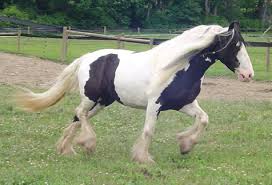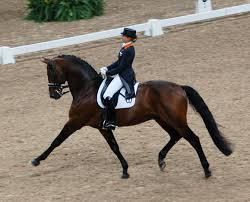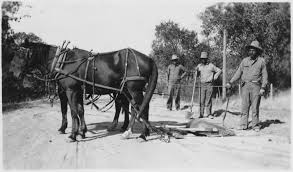Moving Horse Pictures Biography
Source(Gogle.com.pk)born April 9, 1830, Kingston upon Thames, Surrey, Eng.died May 8, 1904, Kingston upon Thames) English photographer. He immigrated to the U.S. from England as a young man, and in 1868 his photos of Yosemite Valley made him famous. Hired by Leland Stanford to photograph a trotting horse in motion, to test Stanford's contention that it lifted all four legs simultaneously, he developed a special fast shutter for his battery of 12 to 24 cameras, and in 1877 he proved Stanford right. He lectured widely on animal locomotion, illustrating his lectures with his zoopraxiscope, a predecessor of the movie projector. His extensive photographic studies of human movement (188487) have been useful to artists and scientists.
For more information on Eadweard Muybridge, visit Britannica.com.
Unanswered QuestionsNew AnswersQ&A CategoriesCouponsGuidesSign In|Sign Up
Home
Search
Settings
Top Contributors
Help Center
Home
Featured Videos: Top
Play
Zombies Help Kids Learn Movie Making
Play
Claire Legrand and The Year of Shadows
Play
Mary Louise Kelly: What Are You Reading?
Play
How to Make Paper Mache
View more Entertainment & Arts videos
Oxford Dictionary of Scientists: Eadweard James MuybridgeTop
Home > Library > Science > Dictionary of Scientists
American photographer (1830–1904)
Muybridge was born Edward James Muggeridge at Kingston-on-Thames in Surrey. He changed his surname and forename in his early twenties, the latter after the Saxon kings who were crowned at Kingston in the 10th century. Although Muybridge spent much of his life in America, making his first trip there in 1852, he always retained links with his birthplace. Indeed, following a serious stagecoach accident in 1860 he returned to England to recuperate from his injuries.
By 1867 Muybridge was back in America, working as partner to the San Francisco-based photographer, Carleton E. Watson, and he quickly established a reputation as a skilled exponent of landscapes with a series of prints taken in California's Yosemite Valley. In 1868 he was appointed director of photographic surveys for the US Government, and undertook photographic surveys of several remote regions, including the ports and harbors of newly purchased Alaska.
An interest in high-speed photography can be traced to the year 1872, when Muybridge was commissioned by the wealthy Californian racehorse owner, Leland Stanford, to attempt to settle the contentious issue of whether a trotting or galloping horse lifted all four feet clear of the ground at any point during its stride. Muybridge's attempts to capture this on film were of poor quality and less than convincing.
In October 1874 Muybridge's personal life was shattered when he was arrested for the murder of his wife's lover, whom Muybridge suspected was the father of the son born in April that year. Muybridge was held in prison for several months, but after a lengthy trial he was acquitted in February 1875. His wife, who had unsuccessfully sued for divorce, died later that year, leaving Muybridge to support the child.
Following a trip to Central America in 1875, and a dramatic panoramic sequence of pictures taken of San Francisco in 1877, Muybridge returned to his attempts at high-speed photography. He developed a more efficient shutter mechanism for the camera, and by using a battery of 12 cameras he was able to produce 12 sharply defined consecutive images of a galloping horse, all taken within half a second.
It was readily apparent that if such a sequence of pictures were viewed in rapid succession, the motion of the horse or other subject would be reproduced. Muybridge mounted the silhouettes of the horse on a glass disk, which was rotated and projected onto a screen through a device invented by the photographer and called a ‘zoopraxiscope’. This was first demonstrated to the public in 1880, in what some would claim to be the first moving picture.
Muybridge's work was by now attracting considerable scientific interest, and in 1884 he began work at the University of Pennsylvania on what was to prove a celebrated series of high-speed studies of movement in both animals and human subjects. His new multilens camera could take 12 pictures on a single photographic plate in as little as one-fifth of a second. The results of this work were published in 11 volumes as Animal Locomotion: an electro-photographic investigation of consecutive phases of animal movement (1887). Included in this were his famous sequences of nude human subjects, often performing bizarre actions such as carrying a pan of water and sweeping with a broom.
The technique used by Muybridge could produce only very short sequences of moving pictures in the zoopraxiscope. However, the American inventor Thomas Edison was impressed by them, and may have found in them inspiration for his own invention, the cine camera and its perforated roll film. Certainly Muybridge and Edison collaborated on an abortive attempt to match sound to Muybridge's picture sequences.
Muybridge returned to Kingston in 1900, and spent his final years there. He bequeathed his zoopraxiscope and other apparatus to the public library in his home town.
Oxford Grove Art: Eadweard MuybridgeTop
Home > Library > Entertainment & Arts > Art Encyclopedia
(b Kingston-on-Thames, 9 April 1830; d Kingston-on-Thames, 8 May 1904). English photographer, active in the USA. He was the first to analyse motion successfully by using a sequence of photographs and resynthesizing them to produce moving pictures on a screen. His work has been described as the inspiration behind the invention of the motion picture.
See the Abbreviations for further details.
Gale Encyclopedia of Biography: Eadweard MuybridgeTop
Home > Library > Miscellaneous > Biographies
One of the most innovative pioneers of photography, Eadweard Muybridge (1830-1904) is perhaps best known as the man who proved that a horse has all four hooves off the ground at the peak of a gallop. He is also regarded as the inventor of a motion-picture technique, from which twentieth cinematography has developed.
Muybridge was born Edward James Muggeridge on April 9, 1830, in the town of Kingston-on-Thames in Surrey, England. When he was 20 years old, he changed his first name to conform to the Saxon spelling and a possible Spanish lineage; he became "Eadweard." His surname was altered in stages; it went from Muggeridge to Muygridge and finally Muybridge.
Relocated to San Francisco
Despite his affinity for British antiques, styles, and customs, Muybridge saw his future in the United States. After a brief stay in London, he immigrated to the United States in 1851. He found work as a commission merchant, initially for the London Printing and Publishing Company and later for Johnson, Fry and Company (for whom he acted as business agent). He was involved in the importation from England of unbound books, which were then bound, sold, and distributed in America. By all accounts, Muybridge was a good businessman who, in just a few years, had set himself up nicely.
During this time he made the acquaintance of Silas T. Selleck, a daguerreotypist (a photographer who makes a photo on a plate of chemically-treated metal or glass). Selleck, no doubt, opened up the world of the image to Muybridge. In the meantime, gold fever infected Selleck, who headed west. He eventually established a photography studio in San Francisco, and the lure of California became stronger to Muybridge. In 1855, he decided to join his friend.
By the time Muybridge arrived, the first boom of the great California gold rush had subsided and San Francisco itself was in a recession. An astute businessman, Muybridge still managed to thrive. He opened a bookstore downtown through which he sold material supplied to him by the London Printing and Publishing Company. Above the bookstore he opened an office as the commission merchant for the company.
Muybridge's business opened up new avenues to him. He became a board member of San Francisco's Mercantile Library Association, which promoted reading by sponsoring a library and lectures, and San Francisco's intellectuals frequented his business. He also brought his two younger brothers, first George (who died in 1858), then Tom to San Francisco.
By the late 1850s, Muybridge's attention began to turn away from business. Travel in California and new techniques in photography had spurred his interest in landscape photography. Muybridge was not a pioneer in this field. The photographs of Charles L. Weed, Robert Vance, and Carleton Watkins were already for sale in San Francisco. Still Muybridge hoped to photograph California more extensively than they had done. Subsequently, he gave up both his businesses. The bookstore was turned over to a music publisher, while his brother Tom became the San Francisco commission merchant for the London Printing and Publishing Company.
After giving up his businesses, Muybridge set out on an extended trip to Europe. His plan was to travel east via stagecoach, before sailing abroad. Along the way, the stagecoach crashed and Muybridge was injured. He remained unconscious for several days. His vision and senses of taste and smell were affected. Arriving in New York City, he sued the company, and then sought medical treatment in London. He briefly returned to New York to settle his lawsuit, but eventually returned to Kingston-on-Thames to recuperate further.
While in Kingston-on-Thames, Muybridge befriended Arthur Brown, a man who furthered Muybridge's already keen interest in photography. Muybridge at this time also tried his hand at invention and improvement on already existing patents. He himself sought a patent on a washing machine and though it was never granted, Muybridge did receive other patents in the United States and England.
In his book Muybridge: Man in Motion, Robert Bartlett Haas describes this time period (1860-66) as Muybridge's "lost years." In fact, Muybridge was really developing a plan. He devoted more and more time to his craft just as new photographic techniques were being developed. He eventually decided the United States, as both subject and market, offered the best opportunity for a budding photographer.
Full-Time Photographer
Muybridge made his way back to San Francisco, now much changed and even more to his liking. If he had had any second thoughts about returning to his old business ventures, they quickly vanished. He was now a professional photographer, and briefly shared a studio with his old friend, Selleck.
He first concentrated on scenes of San Francisco, a city of approximately 200,000 people in 1870. He began taking cityscape photographs of San Francisco in 1867 and would continue to do so until 1881. Many of Muybridge's early photos were of San Francisco Bay from various vantage points, but he also took numerous photographs of city life, notably the architecture. Among his better known photographs at this time were "Pacific Bank, Sansome Street," "Merchant's Exchange, California Street," "Montgomery Block," "Montgomery Street, north from California," "Maguire's Opera House," "Trinity Church and Jewish Synagogue," "The Cliff House," "Russian Hill from Telegraph Hill," and " Montgomery and Market Street, Fourth of July." These photos reflect the growing city, as it emerged to become the most important cities in California.
In 1872 and 1873, Muybridge began to photograph what has become his signature series, a galloping horse. Legend has it that a $25,000 wager between former California Governor Leland Stanford and a rival was involved, but Muybridge's own account makes no mention of the bet. It is believed that Stanford hoped to use the information to breed and train better race horses, while Muybridge was interested was in animal locomotion. But as the Masters of Photography website noted that "The experiments were interrupted when Muybridge was tried in 1874 for murdering his wife's lover.
Marriage and Murder
In 1872, Muybridge married Flora Stone, 22 years his junior, whom he had met when she had worked as a photographic re-toucher at another studio. Their brief marriage would culminate in one of the city's biggest scandals of the decade. Into their circle came Harry Larkyns, a former major in the British army who in 1873, had become theater critic for the San Francisco Post. Larkyns possessed all of the outgoing qualities Muybridge lacked, and it wasn't long before he had thoroughly charmed Flora.
While Muybridge also returned to his original photographic purpose, taking photographs in America's Northwest, Flora and Larkyns became lovers. Muybridge ideas expanded, and he photographed members of the Modoc tribe, Vancouver Island, and Alaska, as well as produced a series of photographs that followed the Central Pacific and Union Pacific railroads from Sa
Moving Horse Pictures for Kids Black and White to Color Funny Hd Wallpapepr Images Pics
Moving Horse Pictures for Kids Black and White to Color Funny Hd Wallpapepr Images Pics
Moving Horse Pictures for Kids Black and White to Color Funny Hd Wallpapepr Images Pics
Moving Horse Pictures for Kids Black and White to Color Funny Hd Wallpapepr Images Pics
 Moving Horse Pictures for Kids Black and White to Color Funny Hd Wallpapepr Images Pics
Moving Horse Pictures for Kids Black and White to Color Funny Hd Wallpapepr Images Pics
Moving Horse Pictures for Kids Black and White to Color Funny Hd Wallpapepr Images Pics
Moving Horse Pictures for Kids Black and White to Color Funny Hd Wallpapepr Images Pics
Moving Horse Pictures for Kids Black and White to Color Funny Hd Wallpapepr Images Pics
 Moving Horse Pictures for Kids Black and White to Color Funny Hd Wallpapepr Images Pics
Moving Horse Pictures for Kids Black and White to Color Funny Hd Wallpapepr Images Pics
 Moving Horse Pictures for Kids Black and White to Color Funny Hd Wallpapepr Images Pics
Moving Horse Pictures for Kids Black and White to Color Funny Hd Wallpapepr Images Pics
 Moving Horse Pictures for Kids Black and White to Color Funny Hd Wallpapepr Images Pics
Moving Horse Pictures for Kids Black and White to Color Funny Hd Wallpapepr Images Pics
Moving Horse Pictures for Kids Black and White to Color Funny Hd Wallpapepr Images Pics
Moving Horse Pictures for Kids Black and White to Color Funny Hd Wallpapepr Images Pics
Moving Horse Pictures for Kids Black and White to Color Funny Hd Wallpapepr Images Pics
Moving Horse Pictures for Kids Black and White to Color Funny Hd Wallpapepr Images Pics
 Moving Horse Pictures for Kids Black and White to Color Funny Hd Wallpapepr Images Pics
Moving Horse Pictures for Kids Black and White to Color Funny Hd Wallpapepr Images Pics

No comments:
Post a Comment